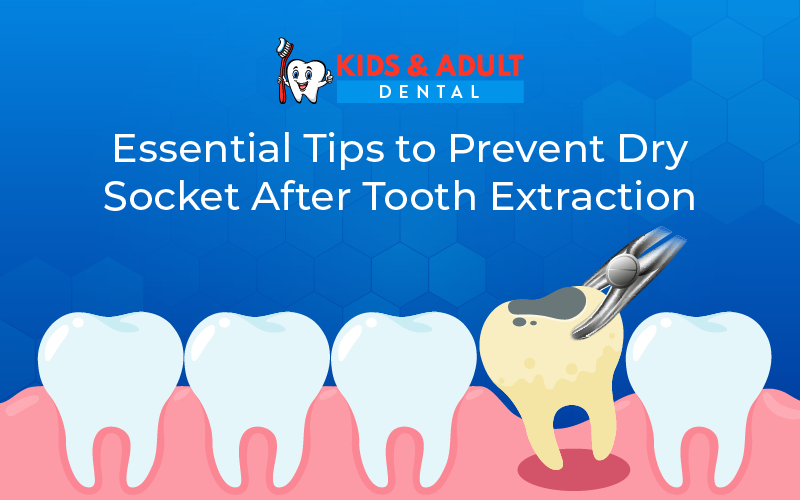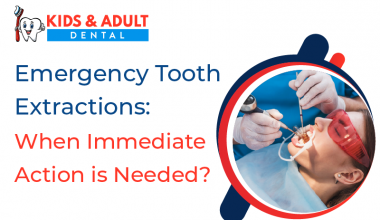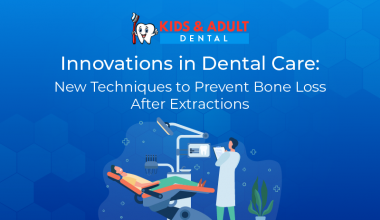After undergoing a tooth extraction, it is important to be aware of the potential complications that can arise during the healing process. One such complication is dry socket, a condition that can cause severe pain and discomfort.
In this ultimate guide, we will explore what dry socket is, why it is a concern, and most importantly, how to prevent it. By following these essential tips, you can ensure a smooth and successful recovery after tooth extraction.
What Is Dry Socket and Why Is It a Concern?
Dry socket, medically known as alveolar osteitis, is a condition that can occur after a tooth extraction. It happens when the blood clot that forms in the socket to promote healing becomes dislodged or dissolves prematurely, leaving the underlying bone and nerves exposed. This exposure can lead to intense pain, bad breath, and an unpleasant taste in the mouth.
Dry socket can significantly disrupt the healing process and delay the recovery timeline, causing discomfort and inconvenience for the patient.
What Causes Dry Socket?

The causes of dry socket can be attributed to various factors that disrupt the normal healing process after tooth extraction. Understanding these causes is crucial in taking preventive measures and minimizing the risk of developing this painful condition.
The Anatomy of A Tooth Socket: How Extraction Leaves A Wound
To comprehend the causes of dry socket, it is essential to understand the anatomy of a tooth socket. When a tooth is extracted, it leaves behind an empty socket in the jawbone.
The socket is lined with a blood clot that forms naturally as a protective layer over the extraction site. This blood clot acts as a barrier, promoting healing and preventing exposure of the underlying bone and nerves.
Factors That Increase The Risk of Developing Dry Socket
Several factors can increase the likelihood of developing dry socket after tooth extraction. These factors include:
- Tobacco Use: Smoking cigarettes or using other tobacco products is a significant risk factor for dry socket. The harmful chemicals in tobacco can interfere with the healing process, impair blood flow, and increase the chances of developing this condition.
- Poor Oral Hygiene: Inadequate oral hygiene practices, such as infrequent brushing and flossing, can create an environment conducive to bacterial growth. Bacteria can infect the extraction site and disrupt the formation of a stable blood clot, leading to dry socket.
- Traumatic Extraction: Tooth extractions that involve complex or difficult procedures, such as the removal of impacted teeth or multiple extractions, pose a higher risk of dry socket.
The trauma associated with these extractions can disturb the blood clot and hinder proper healing. - Age and Gender: Certain demographic factors can influence the susceptibility to dry socket. Women, for example, tend to have a higher risk due to hormonal fluctuations.
Additionally, older individuals may experience slower healing and have a greater likelihood of developing dry socket. - Oral Contraceptives: Hormonal factors can also contribute to an increased risk of dry socket. Women who take oral contraceptives that contain estrogen may have a higher chance of developing this condition. Estrogen can affect blood clot formation and impede the healing process.
Related Post: Emergency Tooth Extractions: When Immediate Action is Needed
Signs And Symptoms Of Dry Socket
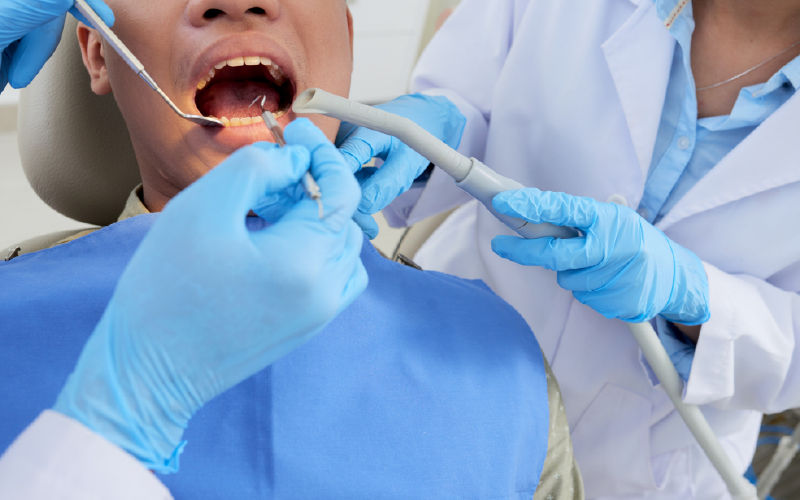
The primary symptom of a dry socket is intense and persistent pain, which typically begins a few days after the tooth extraction procedure.
This pain can be severe and may radiate to the ear, temple, or neck area. Unlike the usual post-extraction pain that gradually subsides, the pain from dry socket tends to worsen or remain constant.
In addition to the pain, other common signs and symptoms of dry sockets include:
- Bad Breath (Halitosis): Dry socket can cause a foul odor in the mouth due to the exposed socket and the potential presence of bacteria.
- Unpleasant Taste: Individuals with dry socket often experience a lingering unpleasant taste, which can be metallic or bitter in nature.
- Visible Empty Socket: In some cases, the blood clot that should form over the extraction site may be dislodged or dissolve prematurely, leaving an empty socket. This can be visually observed upon examination.
Read Also: When it’s Time for Wisdom Tooth Removal
Tips To Prevent Dry Socket After Tooth Extraction
Preventing dry socket after tooth extraction is crucial for a smooth and uneventful recovery. By following these essential tips, you can minimize the risk of developing this painful condition:
1. Follow Post-Extraction Instructions

Pay careful attention to the instructions provided by your dentist or oral surgeon. These instructions may include avoiding certain activities, such as rinsing your mouth vigorously or using straws, as they can dislodge the blood clot and hinder proper healing.
2. Maintain Good Oral Hygiene
Prioritize oral hygiene to reduce the risk of infection and promote healing. Gently brush your teeth, avoiding the extraction site, and rinse your mouth with a mild saline solution or prescribed mouthwash as recommended by your dental professional.
3. Avoid Tobacco and Smoking
Refrain from smoking or using tobacco products during the recovery period. Tobacco can significantly impair healing and increase the chances of developing dry socket. If you are a smoker, consider quitting temporarily to promote optimal healing.
4. Be Mindful of Your Diet

Stick to a soft food diet for the initial few days following the extraction. Opt for nutritious, easy-to-chew foods like yogurt, soup, mashed potatoes, and smoothies.
Avoid hard, crunchy, or sticky foods that can disturb the blood clot and impede healing.
5. Maintain Hydration
Drink plenty of fluids, preferably water, to stay hydrated. Good hydration supports the healing process and helps prevent dry socket. Avoid excessive consumption of caffeinated or sugary beverages, as they can have a dehydrating effect.
6. Take Pain Medication as Prescribed
If your dentist or oral surgeon recommends pain medication, take it as directed. Follow the prescribed dosage and timing to manage any discomfort effectively. Over-the-counter pain relievers, such as ibuprofen, can also be helpful in alleviating mild to moderate pain.
7. Avoid Strenuous Activities

Engaging in strenuous physical activities can increase blood pressure and dislodge the blood clot. Take it easy for the first few days after the extraction and avoid activities that may put unnecessary strain on the extraction site.
8. Attend Follow-Up Appointments
Ensure you attend any scheduled follow-up appointments with your dentist or oral surgeon. These visits allow for monitoring of the healing process and early detection of any potential complications, including dry socket.
Read Also: Things to Know About Getting a Dental Extraction
Expert Tips For Nurturing The Tooth Extraction Site
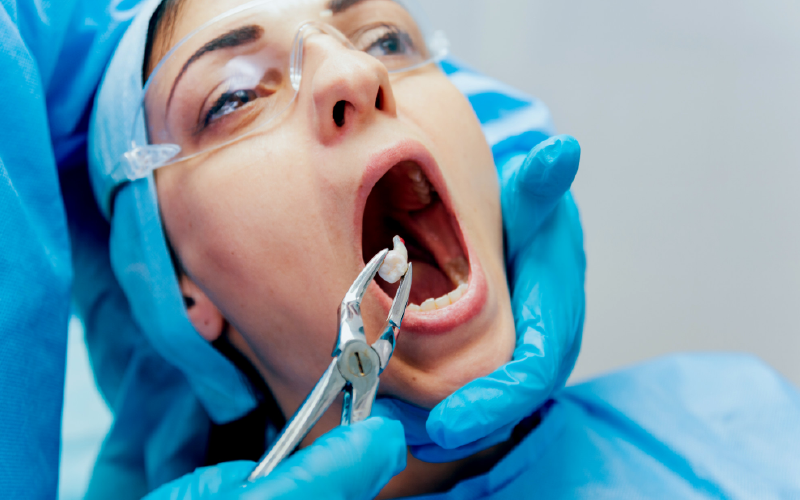
Nurturing the tooth extraction site is essential for proper healing and to minimize the risk of complications. Here are some expert tips to help you take care of the extraction site:
- Follow post-operative instructions carefully.
- Control bleeding by applying gentle pressure with a clean gauze pad.
- Maintain oral hygiene, being careful around the extraction site.
- Avoid spitting or rinsing forcefully for 24 hours.
- Apply cold compresses to reduce swelling.
- Take prescribed medications as directed.
- Avoid smoking and alcohol consumption.
- Stick to a soft food diet initially.
- Avoid vigorous physical activity.
- Attend follow-up appointments with your dentist.
If You Suspect That You May Have Dry Socket, What Steps Should You Take?
If you suspect the presence of dry socket or are experiencing severe pain following oral surgery, it is crucial to contact your dentist without delay. Even if it is outside regular office hours, many dentists offer on-call services to assist you.
Rest assured, dry socket is treatable, and your dentist may employ techniques such as socket rinsing, medication application, and prescribing pain relief.
By adhering to your dentist’s guidance, you can expect significant relief almost immediately, with further improvement anticipated over the subsequent few days.
Once both your mouth and the dry socket have fully healed, you can safely resume your normal activities. While healing times may vary, most individuals feel fully recovered within approximately one week.
Bottom Line
By following the tips in Prevent Dry Socket After Tooth Extraction you can reduce the risk of developing a dry socket. Practise proper oral hygiene, avoid certain activities, and follow your dentist’s instructions for optimal healing.
To promote a smooth recovery after tooth extraction, it’s important to take proactive measures. You can find affordable dental services for kids and adults, including tooth extraction in colorado.
best family dental clinic in denver offers comprehensive care, including cleanings, check-ups, fillings, and extractions. They use modern techniques and prioritise patient comfort. Reach out to local practices for more information and to schedule appointments with the best dentist in colorado Regular dental visits and prompt treatment contribute to maintaining optimal oral health for the whole family.

